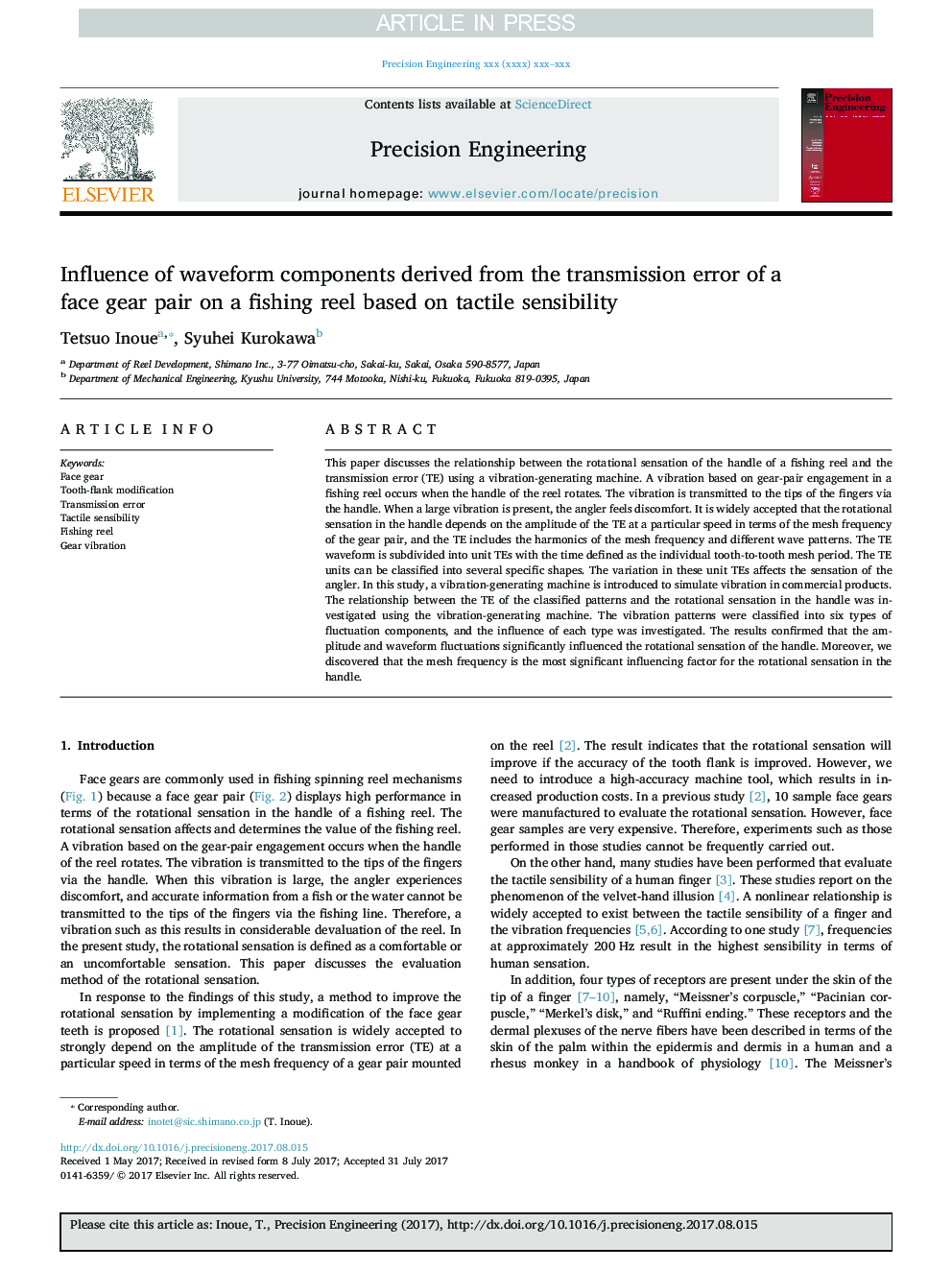| Article ID | Journal | Published Year | Pages | File Type |
|---|---|---|---|---|
| 7180560 | Precision Engineering | 2018 | 12 Pages |
Abstract
This paper discusses the relationship between the rotational sensation of the handle of a fishing reel and the transmission error (TE) using a vibration-generating machine. A vibration based on gear-pair engagement in a fishing reel occurs when the handle of the reel rotates. The vibration is transmitted to the tips of the fingers via the handle. When a large vibration is present, the angler feels discomfort. It is widely accepted that the rotational sensation in the handle depends on the amplitude of the TE at a particular speed in terms of the mesh frequency of the gear pair, and the TE includes the harmonics of the mesh frequency and different wave patterns. The TE waveform is subdivided into unit TEs with the time defined as the individual tooth-to-tooth mesh period. The TE units can be classified into several specific shapes. The variation in these unit TEs affects the sensation of the angler. In this study, a vibration-generating machine is introduced to simulate vibration in commercial products. The relationship between the TE of the classified patterns and the rotational sensation in the handle was investigated using the vibration-generating machine. The vibration patterns were classified into six types of fluctuation components, and the influence of each type was investigated. The results confirmed that the amplitude and waveform fluctuations significantly influenced the rotational sensation of the handle. Moreover, we discovered that the mesh frequency is the most significant influencing factor for the rotational sensation in the handle.
Related Topics
Physical Sciences and Engineering
Engineering
Industrial and Manufacturing Engineering
Authors
Tetsuo Inoue, Syuhei Kurokawa,
